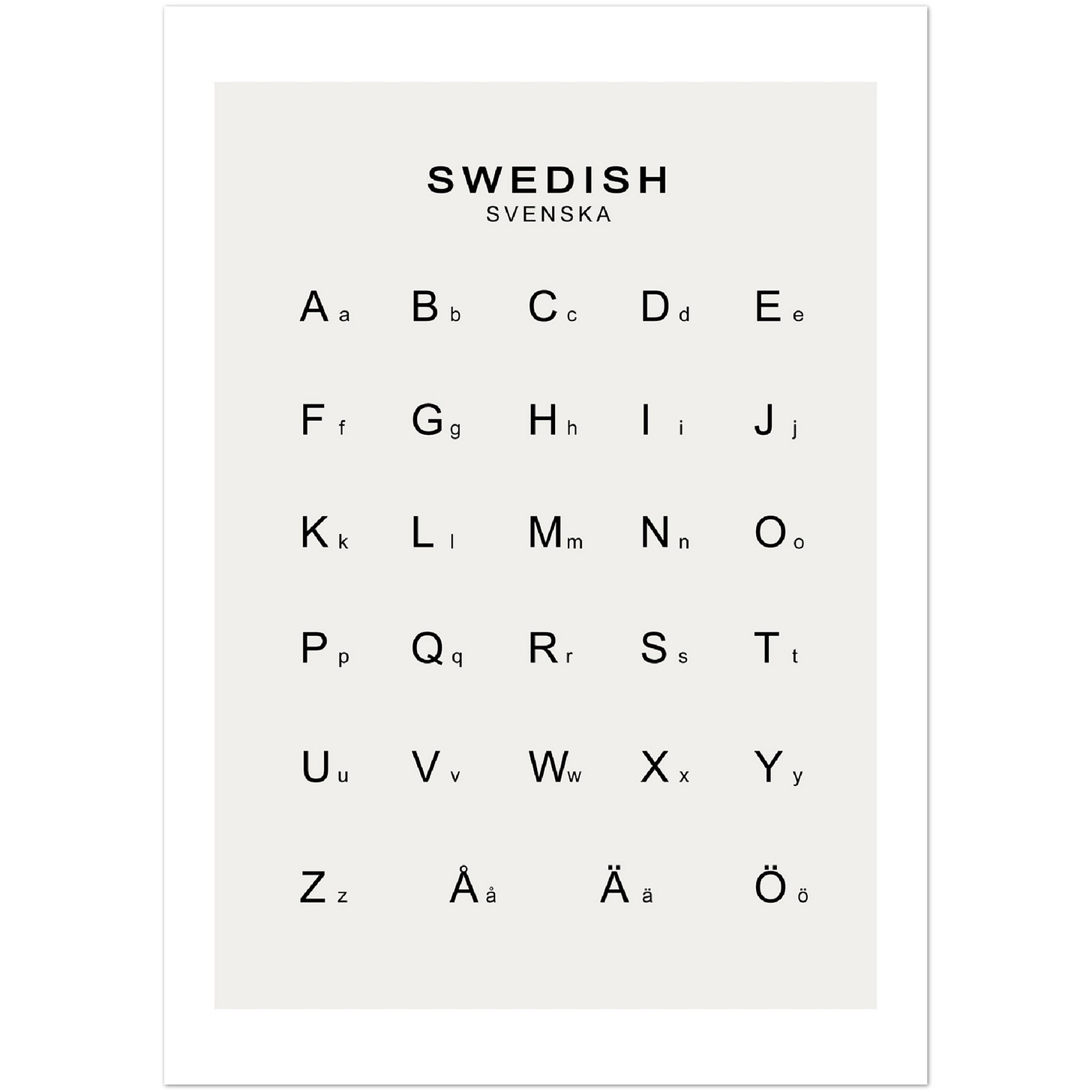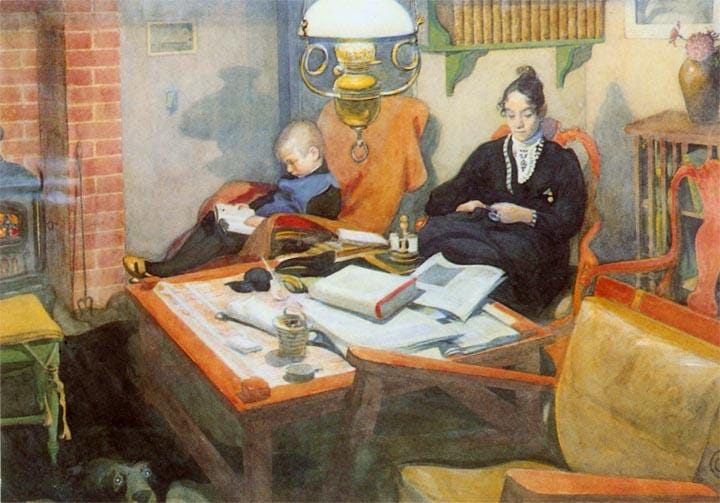There was an article in the Guardian this week about a town in the north of Sweden which is running a campaign to encourage people to “säg hej” (“say hi”, but the Swedish “say hey” rhymes nicely). It’s part of an effort to combat loneliness and feelings of isolation during the dark winter months. I like this, a timely reminder that it doesn’t take a lot of effort to acknowledge others who share the world with us - and to connect with spoken language.
[Swedish influence at home: cinnamon & cardamom buns made by Phoebe]
One thing that has always struck me in France is the way people automatically say bonjour/bonsoir when they come into a shared space such as a boulangerie or café or bar, even if everyone there is a stranger to them. You’d never start a conversation with someone who works in a shop without a preliminary bonjour to establish rapport and respect, and particularly nice is the way people from a very early age, and even teenagers, say bonjour to neighbours when they pass on a staircase or on the street. There’s none of this ridiculous keeping your head down/pretending to not see or know someone who lives two doors down that happens so often here.
I particularly like the word ‘hej’ in Swedish. To my ears it sounds jolly and informal, a nice opener, although the first time I went to Stockholm and people said it to me, I thought I was being called or accosted or stopped or warned about something. But now I’m used to it, and would be quite happy to go round Cambridge saying hej to people if I thought it would help. I could even ask them where they are from, which languages they speak, what they do for a living, and if they know what time it is, before reciting the days of the week and counting from one to twenty. Not exactly riveting conversational gambits, but better than ignoring the fact that they exist.
[mid-C19 classroom in the schoolhouse in Skansen]
I’m doing a beginners’ Swedish course because we have a Swedish daughter-in-law, a son who speaks fluent Swedish, and there’s a large Swedish family to whom we are now connected by marriage. And every single one of them speaks perfect English. For someone who studied and loves languages, I found it both mortifying and annoying when we visited that I couldn’t say a thing, apart from hej (clearly that alone would be perfectly OK in Luleå). I may have been doing and getting Ordel every day for eighteen months, but until recently I still only had four starter words (kanel, lagom, fikas, huset) and I immediately forgot the correct words in every single puzzle - a pity really, as I could perhaps by now have stunned people with my sparkling five-letter word conversations. So I was effectively going back to the classroom and starting from scratch.
And it’s fascinating, challenging, strange. For a start, Swedish has a unique rhythm when spoken, and the stresses and intonation are so different to English and other languages that it takes a lot of readjustment to stress for example two syllables in one word without thinking you sound ridiculous. Then there are the three extra vowels to add to the alphabet - å ä and ö - the sounds of which took me a week to remember. Plus, what you see on the page is transmogrified when spoken: consonants at the ends of words disappear, a single vowel becomes apparently polysyllabic, some combinations of letters are just a whoosh of air (sju - seven), and k can be sh or k in the same word (kärlek - love). But the grammar in the early stages is quite straightforward, and the words themselves are an interesting mix with many European and Scandinavian influences.
[Karin Reading (1904), Carl Larsson]
When you learn a language at school you don’t really have any options about the subject matter, so you have to do what the textbook and teacher tell you, which is why so many children are bored witless in French lessons in this country. (Jack Whitehall did a very funny routine about English teenagers all asking “où est la piscine?’ in La Rochelle.) But when you are an adult learner, being able to describe your daily school routine or direct someone left/right/straight on/ right again to the bus station just doesn’t cut it.
[‘Emma Zorn Reading’ (1907), by Anders Zorn]
When we moved to Germany and I took one-to-one lessons, I had a very short but clear list of language requirements: having a baby (or two - Zwillinge in my case), knitting patterns, and food markets. No reading Goethe or chatting to locals about Nietzsche’s philosophy for me.
So what I’d like to be able to do in Swedish in Sweden is discuss and order bread and coffee, find out where the best kardemummabulle (cardamom buns) can be found in any given location, ask for directions to the nearest swimming lake and the temperature of the water, read a local paper on a winter’s evening (looking like Emma Zorn),
[Svenskt Tenn: how do you say, “how much to buy everything in the shop?”]
admire everything aloud in Svenskt Tenn, be the person in charge of fika each day, vaguely follow the plot of an Ingmar Bergman film, and translate product names in IKEA (in fact they have a ‘learn Swedish with IKEA’ video).
[‘Vid aftonlampan’/’By the evening light’ (1908), Carl Larsson]
Instead, we are spending a lot of time in lessons on telling the time, talking about the Swedish royal family, and discussing a pensioner’s daily routine, so it’s not exactly setting me up for my dream scenarios and conversations. But at least I can now move to Luleå and säg hej with confidence to all and sundry
Glad sondag!











HEJ!
Good luck with your Swedish studies. We are only ten million who speak Swedish, so we warmly welcome you to the group.
Swedish is a Germanic language and closely related to the other Nordic languages: Danish, Norwegian, Icelandic, and Faroese, but also related to languages such as English, German, and Dutch. If you can read Swedish, you can also read Norwegian and Danish, understand certain words in Icelandic and Faroese, and see the similarities with certain words in English and German.
I want to thank you for a very fine and beautiful blog that brings me joy every Sunday!
Allt gott!
Gerd Pedersen in Lund
Saying “good morning”, apparently randomly in London??! You are viewed with horror and as a freak. I do this DELIBERATELY in our office lift on arriving in the morning: the cheeriest “good morning” and a broad grin. I work with a lot of actuaries. They look traumatised by the time of my exit on the fifth floor.